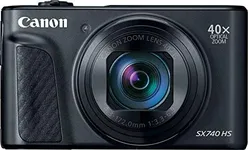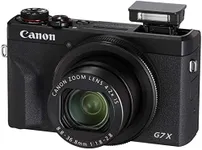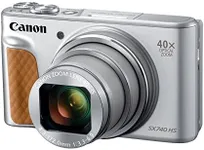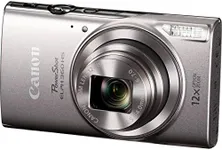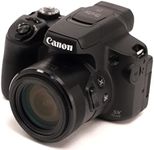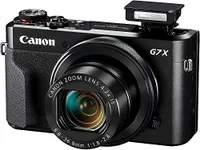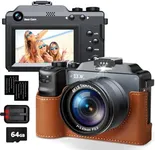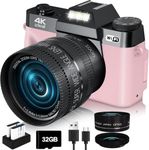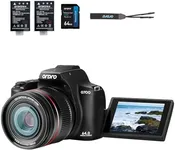Buying Guide for the Best Canon Point And Shoot Cameras
When choosing a Canon point-and-shoot camera, it's important to consider your specific needs and preferences. Point-and-shoot cameras are designed for ease of use, portability, and convenience, making them ideal for casual photography, travel, and everyday moments. To find the best fit for you, focus on key specifications that will impact your photography experience and the quality of your photos.MegapixelsMegapixels refer to the resolution of the camera's sensor, which determines the amount of detail the camera can capture. Higher megapixels mean more detail, which is important if you plan to print large photos or crop images without losing quality. For casual use and sharing photos online, a camera with 12-16 megapixels is usually sufficient. If you want more detail for larger prints or professional use, consider cameras with 20 megapixels or more.
Zoom RangeThe zoom range indicates how much the camera can magnify a subject. Optical zoom is more important than digital zoom because it uses the camera's lens to bring the subject closer without losing image quality. A higher optical zoom range is beneficial for capturing distant subjects, such as wildlife or sports events. For everyday use, a zoom range of 3x to 10x is typically adequate. If you need to capture faraway subjects, look for cameras with 20x or higher optical zoom.
Image StabilizationImage stabilization helps reduce blur caused by camera shake, especially in low light conditions or when using high zoom levels. This feature is crucial for achieving sharp, clear photos without the need for a tripod. Optical image stabilization is generally more effective than digital stabilization. If you often shoot in low light or use high zoom, prioritize cameras with good image stabilization.
Sensor SizeThe sensor size affects the camera's ability to capture light and detail. Larger sensors generally produce better image quality, especially in low light conditions. Common sensor sizes in point-and-shoot cameras include 1/2.3-inch, 1-inch, and APS-C. For casual photography, a 1/2.3-inch sensor is usually sufficient. If you want better low light performance and higher image quality, consider cameras with a 1-inch or larger sensor.
Video RecordingMany point-and-shoot cameras offer video recording capabilities. The resolution and frame rate are key factors to consider. Full HD (1080p) is standard and suitable for most users, while 4K resolution provides higher detail and is ideal for those who want the best video quality. If you plan to record a lot of videos, look for cameras with good video stabilization and higher frame rates (60fps or more) for smoother motion.
ConnectivityConnectivity options, such as Wi-Fi, Bluetooth, and NFC, allow you to easily transfer photos and videos to your smartphone or computer. This is convenient for sharing your images on social media or backing them up. If you value quick and easy sharing, look for cameras with built-in Wi-Fi or Bluetooth. Some models also offer GPS for geotagging your photos, which can be useful for travel photography.
Battery LifeBattery life determines how many photos or videos you can take before needing to recharge. Longer battery life is important if you plan to use the camera for extended periods, such as during travel or events. Check the manufacturer's specifications for the estimated number of shots per charge. For casual use, a camera with 200-300 shots per charge is usually sufficient. If you need more, look for models with higher battery capacity or consider carrying a spare battery.
Size and WeightThe size and weight of the camera affect its portability and ease of use. Point-and-shoot cameras are designed to be compact and lightweight, making them easy to carry around. If you prioritize portability, look for smaller, lighter models that can easily fit in your pocket or bag. However, keep in mind that very small cameras may have fewer features or smaller sensors. Balance your need for portability with the features and image quality you desire.
